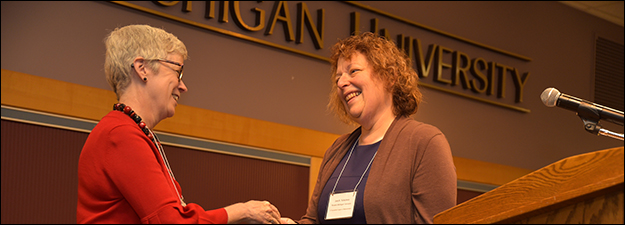Dwelling in the Anglo-Saxon Landscape II: Life, Death, and Wellbeing
Sponsoring Organization(s)
Dept. of Archaeology, Durham Univ.
Organizer Name
Sarah J. Semple
Organizer Affiliation
Durham Univ.
Presider Name
Helen Foxhall Forbes
Presider Affiliation
Durham Univ.
Paper Title 1
Mortuary Topography and Landscape Perception in Early Medieval Southern England and the near Continent: A Multi-scalar Approach
Presenter 1 Name
Kate Mees
Presenter 1 Affiliation
Durham Univ.
Paper Title 2
The Past and the Construction of Identity in the Landscape of Anglo-Saxon England
Presenter 2 Name
Adam Goodfellow
Presenter 2 Affiliation
Durham Univ.
Paper Title 3
"Her Own Place . . . Still Remembered": Goscelin's Saintly Architects and the Anglo-Saxon Landscape
Presenter 3 Name
Sarah Sutor
Presenter 3 Affiliation
Univ. of Illinois-Urbana-Champaign
Start Date
13-5-2017 1:30 PM
Session Location
Schneider 1220
Description
The Anglo-Saxon Landscape 1: Dwelling and Experience
This session will explore how early medieval populations perceived, understood and used the early medieval landscape. The fabric of the natural world and the remnants of the ancient past were structuring agents for early medieval praxis, in daily life, funerary ritual, seasonal activities, or political and elite ceremony. The papers in this session will explore how the natural world and resources shaped human behaviour in Anglo-Saxon England touching on aspects such as burial, settlements, movement and mobility and health and wellbeing. Regional and temporal variations in patterns of human interaction will be explored. Together these papers will argue that to fully understand ‘Being Medieval’ we need to harness and integrate a full range of source material to describe the shifting dialectic between people and the landscapes in which they lived.
Sarah J. Semple
Dwelling in the Anglo-Saxon Landscape II: Life, Death, and Wellbeing
Schneider 1220
The Anglo-Saxon Landscape 1: Dwelling and Experience
This session will explore how early medieval populations perceived, understood and used the early medieval landscape. The fabric of the natural world and the remnants of the ancient past were structuring agents for early medieval praxis, in daily life, funerary ritual, seasonal activities, or political and elite ceremony. The papers in this session will explore how the natural world and resources shaped human behaviour in Anglo-Saxon England touching on aspects such as burial, settlements, movement and mobility and health and wellbeing. Regional and temporal variations in patterns of human interaction will be explored. Together these papers will argue that to fully understand ‘Being Medieval’ we need to harness and integrate a full range of source material to describe the shifting dialectic between people and the landscapes in which they lived.
Sarah J. Semple

